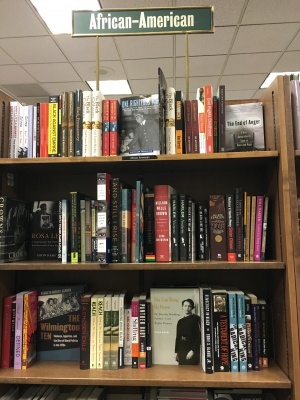Black History Month Must-Reads
February 15, 2016

February is Black History Month, and as is true with the other 11 months of the year, it is a wonderful time to dive into the literary works of black writers addressing race in America. To distill the contribution of black writers and thinkers into a single, 700-word article would be an absurd task, so instead, here are just four books, spanning various genres, that prompt readers to acknowledge the reality of this nation’s history and of its present.
Ta-Nehisi Coates’s Between the World and Me (Penguin Random House), winner of the National Book Award, is a part-memoir, part-essay that investigates the American construction of “race,” a term he cites as “the child of racism, not the father.” Structuring the book as a letter to his 15-year-old son, Coates examines the implications of inhabiting a black body in a nation whose present continues to reflect the shameful legacy of its past. This book is a thorough, honest assessment of the state of racism in our society. Weaving stories of his own past and present with investigations into the country’s larger history, Coates’s book is an excellent portrayal of not only the facts of racism, but also the visceral impact that such prejudice creates. Toni Morrison called this book “required reading”—a reason in itself to buy this book.
The cover of Claudia Rankine’s Citizen: An American Lyric (Graywolf Press), a single black hoodie on an otherwise white background, prepares its reader for what is to come: a haunting, lyrical presentation of the ugly realities of racism. A mix of poetry, photography, anecdote and essay-like prose, this work is a meditation on the roles race and racism play in everyday life. A neighbor calls the cops on the narrator’s babysitter, whom the neighbor has deemed suspicious; a therapist assumes a new patient is trespassing on her property; a woman is called the name of the only other black woman in her office. These are several of the many kinds of microaggressions that Rankine’s work illuminates—instances that must be acknowledged in order to create a self-aware society that wishes to stop the perpetuation of thinly (and at times not so thinly) veiled racism. This work has won far more awards than I could list in a single paragraph, but suffice it to say that it has earned its place in history. Fortunately for Fordham students, Rankine will visit Fordham University in April to give a reading for the Reid Writers of Color Series.
For an examination into the criminal justice system and its explicit imprisonment of black men, read Michelle Alexander’s The New Jim Crow: Mass Incarceration in the Age of Colorblindness (The New Press). Presenting a thorough collection of legal research and data, Alexander, a civil rights lawyer and professor of law, argues that the war on drugs and the practice of mass incarceration has served as a new tactic for an old practice: what Alexander calls, as quoted in the New York Times, “racial and social control.” Her assertion that mass incarceration deliberately perpetuates a racial “caste system” is a controversial one, which some have disputed; what is widely accepted, though, particularly in a time of bipartisan efforts to reform the criminal justice system, is the reality that mass incarceration has disproportionately affected black lives. Read this book if you’re interested in delving into the history of the war on drugs and its place in our nation’s racial narrative.
And finally, this list would be incomplete without a work of fiction by the Nobel Prize laureate and historically-minded Toni Morrison. For an exploration into the ways our history defines our present, revisit Beloved (Random House), the story of Sethe, a former slave, who is—literally—haunted by the events of her past. After escaping Sweet Home, the farm where she worked in captivity, Sethe and her daughter navigate life in a home haunted by the ghost of her baby. Playing with form, voice, perspective and a nonlinear sense of time, Morrison draws the reader deep into the world of a woman whose hardships mark her in ways she cannot escape. You might choose to follow this with a reading of Morrison’s new novel, God Help the Child (Penguin Random House) which, uniquely for a Morrison novel, takes place in the present day.









